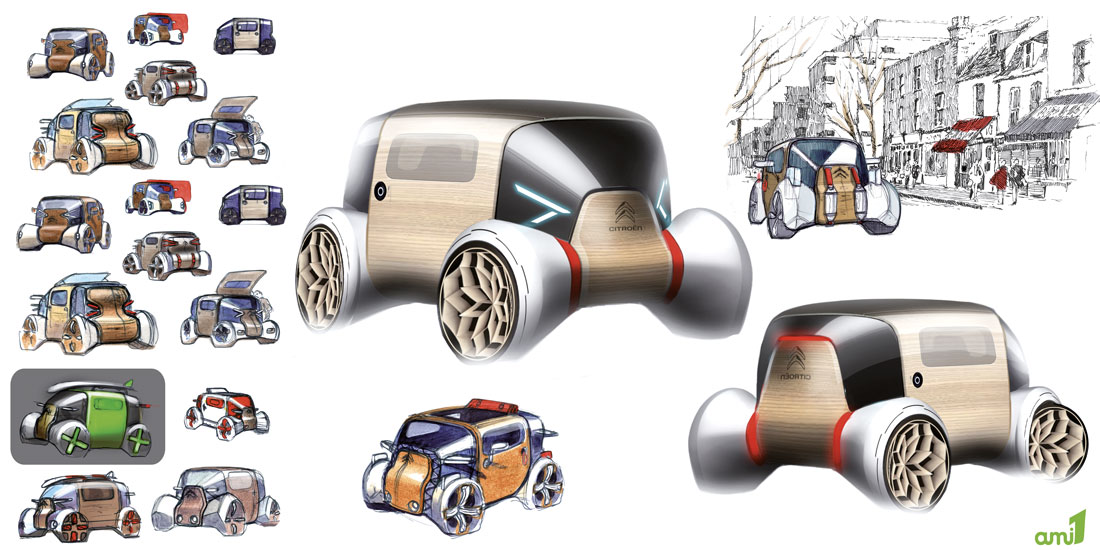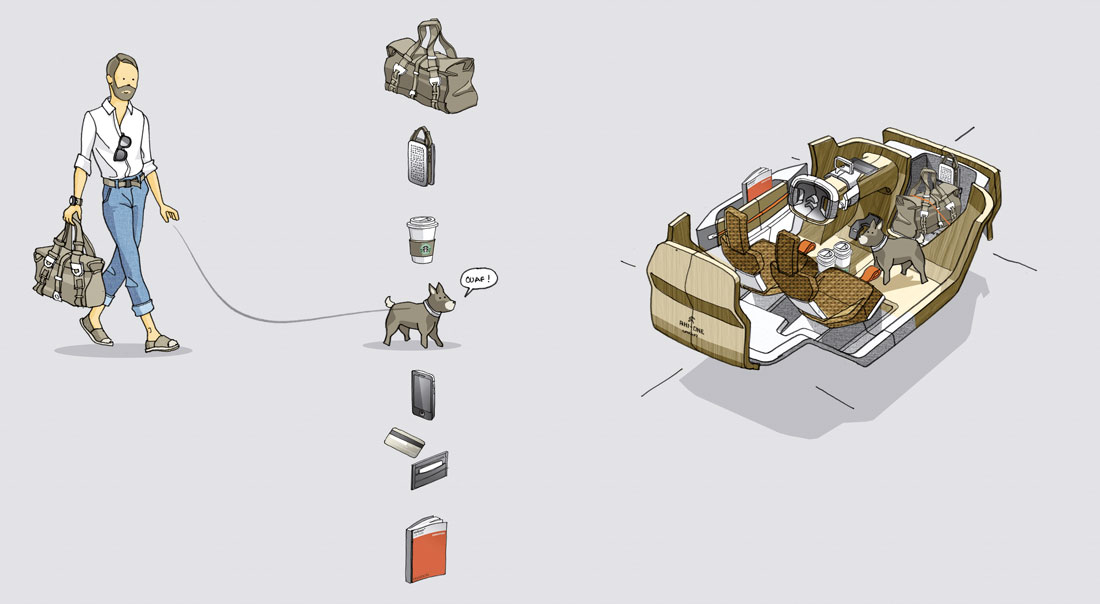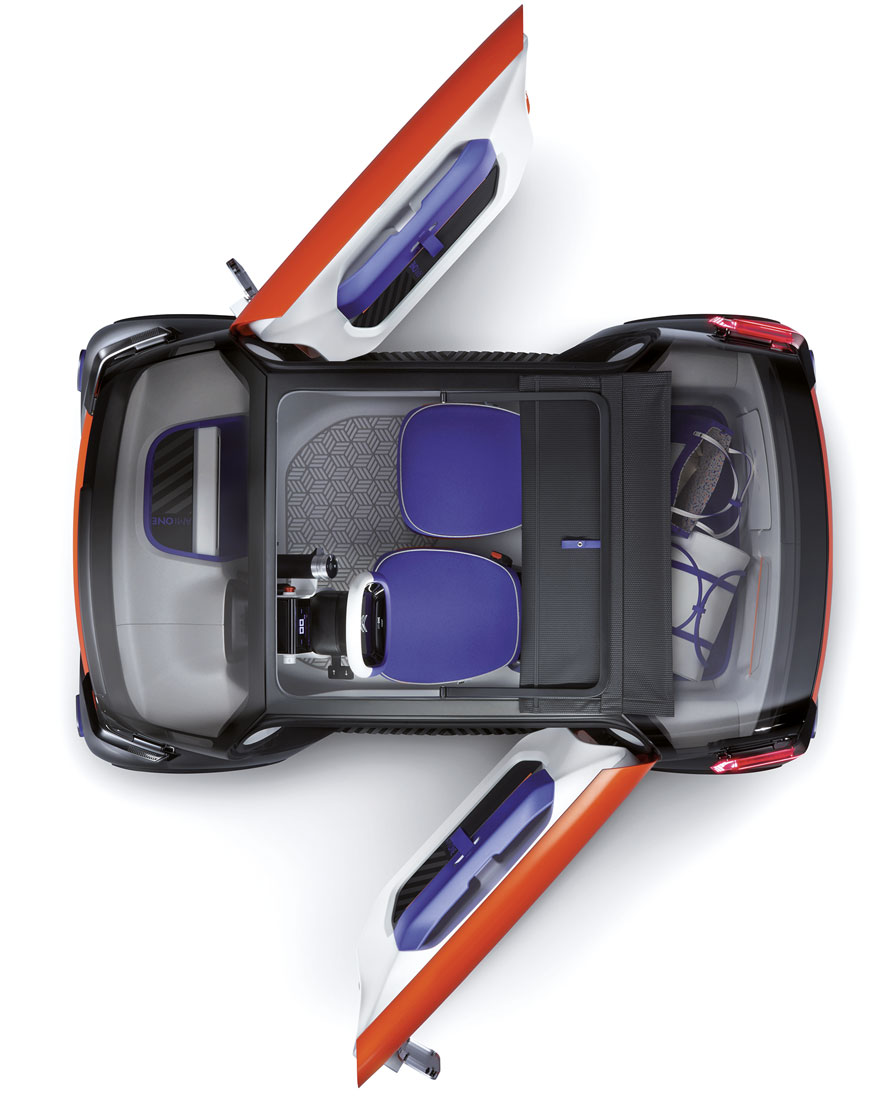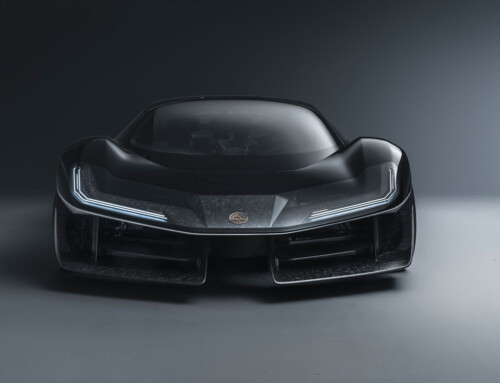Of all the boundaries on tomorrow’s motoring landscape, one of the most stimulating to emerge is shared mobility, which promises to profoundly change the daily lives of millions of people in large urban centres. “In Paris, for example, many people already move around on electric scooters, pedal-assisted bicycles and even kick-scooters”, explains Pierre Leclerq, head of Citroën design. “This is our answer”.
Packed into a length of two and a half metres and tailored for two passengers, the Ami One aims to communicate freshness and accessibility, with a much greater immediacy than a private car: “In all our products we try to imagine a relationship with the end user, focusing on a language that suits his world. Here, how-ever, we didn’t have to define a pop-hearted C3 or C4 Cactus addressed to a single buyer, but rather an “urban object” directed at a multitude of daily users. For this reason it was necessary to develop intuitiveness in depth. Just think that you get into the car by simply framing the QR code on the door handles with a smartphone”.
It is in fact the doors that are one of the key elements of the functional and constructional layout: identical on right and left and rear-hinged on the driver’s side, they define the lines of the sides and roof and inspire a common thread running through the project, since the main panels of the nose and tail, the bumpers, the sills, the supports of the light clusters and other components are also the same. A flash of creativity oriented intelligently in the interests of cost containment: “For the moment the optics remain that of a concept, but even if we hypothesise possible future production, numbers would still be limited: that’s why we developed industrial strategies much cheaper than usual right from the start”, continues Leclerq.
The aesthetics produce a markedly horizontal effect typical of the brand but in this case directly linked to the impossibility of adopting a rising beltline, which perhaps gives the microcar an unexpected resemblance to the Spacetourer commercial vehicle and certainly gives it a significant visual solidity, thanks also to the 18″ wheels.”We did not adopt any clear-cut mechanical base, as the only technical constraint was electric traction. This also allowed us to experiment with the dimensions of the wheel arches and the proportions”.
And if some cues may appear typical of many other extreme city cars, such as the bright colour and almost anthropomorphic friendliness of the front, on closer examination you notice the intention of lightness (manual canvas hood, “essential” rear-view mirrors, non-upholstered seats, dashboard without touch screen) that makes a carefree style a real necessity: keep the weight down to 500 kg, the limit for homologating the Ami One as a quadricycle and making it really usable by all motorists.
“I didn’t participate in this project from the start, but I love it a lot”, reveals Pierre Leclerq. “It’s functional, comfortable, intelligent and democratic. Like the popular Citroëns of the past, in short. If all cars were like that in Paris, maybe it would be a better place to live!
(Full article in A&D no. 236)
















